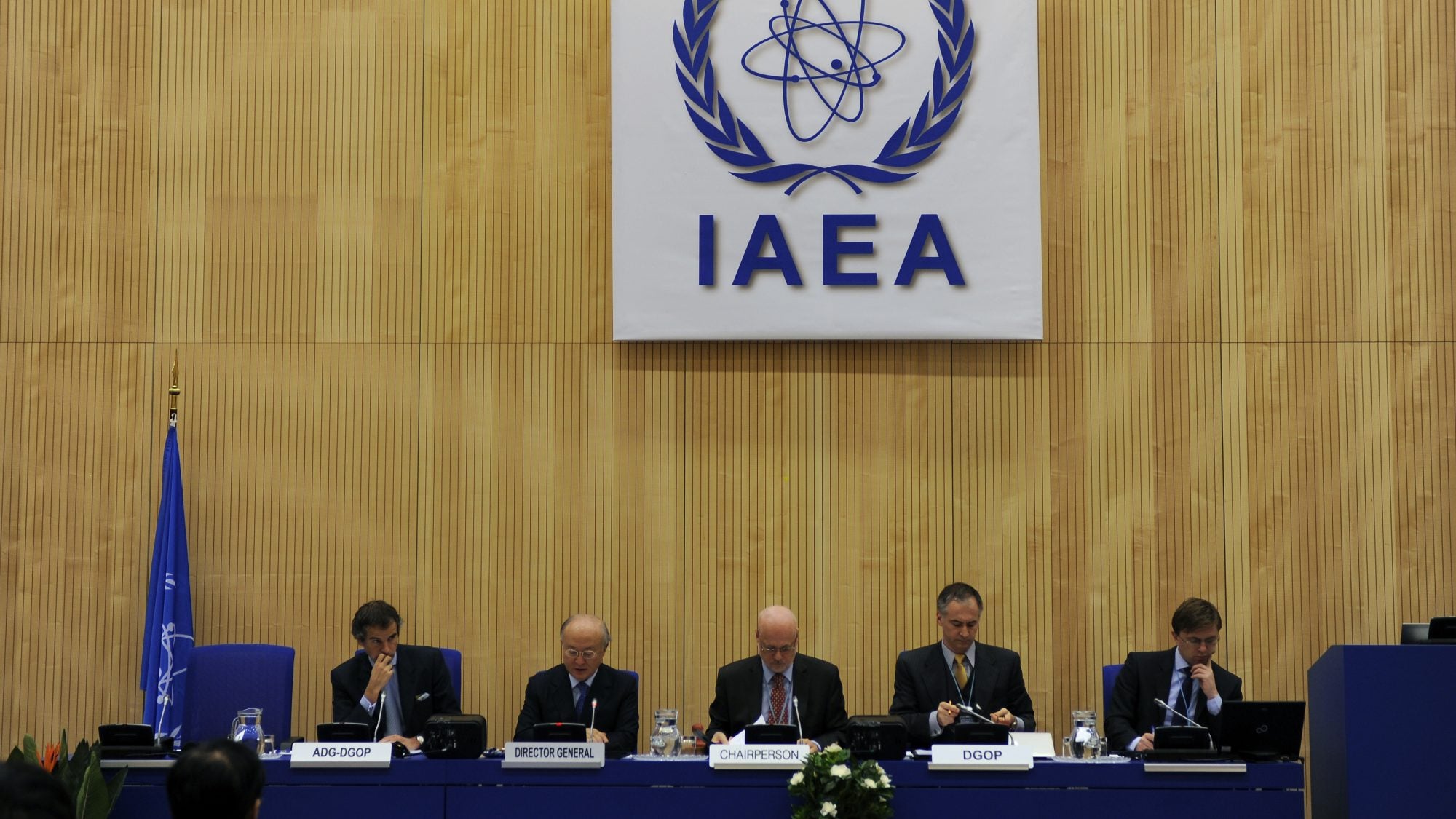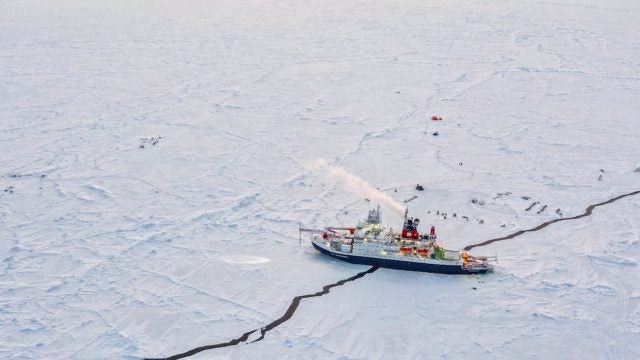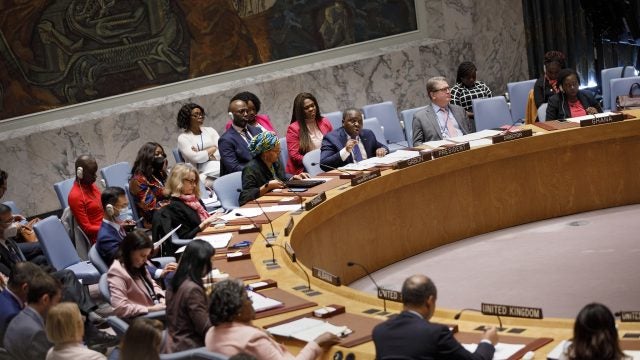
Title: Abandon a Middle East Weapons of Mass Destruction Free Zone
Israel’s reluctance due to national security concerns and Saudi Arabia’s conditional support, coupled with the lack of credible enforcement measures, raise doubts about the viability for a Middle East Weapons of Mass Destruction Free Zone (MEWMDFZ). The author suggests a nuanced, bilateral diplomacy approach and emphasizes the upcoming conference’s opportunity to address WMD-related insecurities in the region.
At the Nuclear Non-Proliferation Treaty (NPT) Review Conference in 2010, delegates were, for the first time, able to progress with a UN Resolution for a MEWMDFZ. The regional conference on the establishment of the zone will take place in Finland in December 2012. The outcome from such a conference could potentially put the Middle East on a level pegging with other nuclear free zones in Africa, Central Asia, Latin America, Southeast Asia and the South Pacific. Indeed, the Middle East is one of the last regions that have not developed such a zone, though the need to curtail WMD-related activities in the Middle East is clear.
However, there are multiple Israeli contentions with the zone which make progress unlikely. First, Israel is unlikely to allow its policy of nuclear ambiguity or its nuclear deterrence to be compromised. Second, Israel has already stated that it is only possible to achieve a MEWMDFZ when its threat perception is low, such as when it signed the Comprehensive Test Ban Treaty and Chemical Weapons Convention in the 1990s. Current regional dynamics are anything but reassuring: the actions of Syria (which had a nuclear reactor at Dair Alzur before Israeli forces destroyed it in 2007) and Iran (with an enrichment program across various sites) do not contribute to a low Israeli threat perception.
Third, Israel is unwilling to commit to a concept that might risk its national security, especially when the UN Security Council has been unable to solve the conundrum of the Iranian nuclear program. Even with unprecedented safeguards and monitoring, it could take a generation of confidence-building measures to bring Israel into the non-proliferation regime. Fourth, there are some major logistical barriers to making a MEWMDFZ workable, including the definition and recognition of borders that will set the parameters of any agreement—a problem in the case of Israel and Palestine. Palestinian statehood could therefore contribute to positive non-proliferation developments in the region if it reduces tensions with Israel. Therefore, the US and other members of the Quartet need to re-double their efforts to broker a Israeli-Palestinian peace deal for the benefit of regional security. Finally, Israel is not recognized by many Arab States in the Middle East and South Asia (MESA) group of the International Atomic Energy Agency (IAEA). This poses questions as to whether limited state recognition might support negotiations on a MEWMDFZ.
Saudi Arabia, like Egypt, has come out in favor of a MEWMDFZ, but rather than promoting non-proliferation, it has made public that it will build nuclear weapons if Iran develops a nuclear weapon. Prince Turki al-Faisal of Saudi Arabia has also indicated that a MEWMDFZ should be enforced with a security guarantee (i.e. nuclear umbrella) from Permament Five (P5) Members of the UN Security Council (UNSC) an arrangement that both Israel and Iran may find difficult to accept. Without UNSC enforcement (or at least membership of a nuclear state from outside the region), there are few credible alternative enforcement measures. Instead the zone would have to rely on peer group pressure and the threat of retaliation from other members of the group. Therefore, given the number of geo-strategic and national security complications involved, a MEWMDFZ appears to be more of a diplomatic and strategic initiative by some Arab States to achieve specific foreign policy aims, rather than the pursuit of a realistic policy option in itself. Pressure on Israeli and Iranian proliferation appears to be the key intention.
The review conference on a MEWMDFZ in December holds various opportunities for drawing international attention, condemnation and progression on issues related to WMD-related insecurities in the region. Ideally, the conference would reduce the possibility of another regional war by lessening the likelihood of an Israeli pre-emptive strike, or another trigger. Discussions could also contribute to a common regional posture on the Iranian nuclear program. For example, various confidence-building measures might be adopted which, short of the establishment of a zone, could improve the odds of breaking the diplomatic deadlock over Iran. The conference is also a useful time to push the United States to act more as an impartial guarantor of security in the Middle East or to step back in favor of a multilateral approach through the UNSC. This would allow for a more even balance of power in the region and greater regime security in the Gulf. There are also concerns about the WMD aspects of some of the civil conflicts taking place in the region, such as in Syria, where chemical weapons may be lost to non-state actors thereby triggering retaliatory measures from Israel. Finally, the WMD issue is a good place to start on addressing lackluster regional security provisions in the Middle East. It might even pressure Israel to disarm and for the Quartet to address the root causes of the ‘resistance axis’ threat, namely lack of progress on the Israel-Palestine conflict.
Any future Middle East non-proliferation regime should rely on strengthening bilateral diplomacy for agreements on renouncing enrichment and processing technology. The disarmament provisions within the NPT must also be bolstered. Are the NPT and IAEA up to the task? There is good reason to think so: In a recent interview with the author, a former ambassador to the IAEA stated that in 1975 the IAEA thought there would be more than twenty states with nuclear weapons by 2000. Today there are acknowledged to be nine, (five official nuclear weapons states, three outside of the NPT and one undeclared nuclear state), so the IAEA and NPT appear to have been successful in promoting non-proliferation.
Because of the complexity of issues, a one-size-fits-all approach is unlikely to work in the Middle East. It may therefore be better to slowly implement safeguards and work directly with nuclear holdouts. This bilateral approach also has the advantage of promoting disarmament amongst the P5 members of the UNSC that are likely to be responsible for undertaking such diplomacy. Boosting NPT protocols may support this process, since this will clarify breaches of the NPT. Without this approach, it is difficult to see how the formidable barriers to an agreement will be overcome.
. . .
Dr Robert Mason is a non-resident fellow at the Arab Gulf States Institute in Washington and a fellow with the Sectarianism, Proxies and De-sectarianisation project at Lancaster University.
Image Credit: IAEA Imagebank, CC BY-SA 2.0, via Wikimedia Commons.
This is an archived article. While every effort is made to conserve hyperlinks and information, GJIA’s archived content sources online content between 2011 – 2019 which may no longer be accessible or correct.
Recommended Articles

This article explores the uncertain future of Arctic governance amid shifting global geopolitics. It argues that whether Washington and Moscow opt for confrontation or cooperation, multilateralism in the Arctic…

Twenty-five years ago, the United Nations Security Council adopted Resolution 1325, establishing a framework that underpins the Women, Peace, and Security (WPS) Agenda. The Resolution recognized both the…

When we analyze conflicts in the Middle East, we are not analyzing conflicts with isolated impacts but risks for global energy security. Recent conflicts in the Middle East have highlighted…